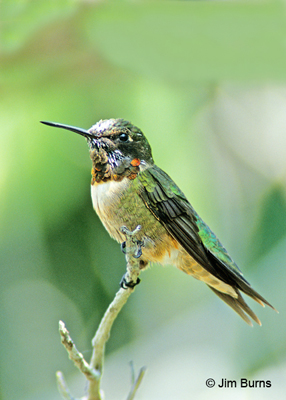
What triggered this rant was the recent series in the Arizona Republic weighing the pros and cons of funding Arizona’s state parks and natural areas. The contributing journalist pointed out, quite correctly I believe, that non-consumptive users such as birdwatchers and nature photographers should share the costs of upkeep and development with hunters and fishermen. The comment was something to the effect that birders standing in the desert watching a “ruby-throated hummingbird” should be willing to pay for the privilege.
Other than lamenting, once again, that the newspaper style sheet doesn’t allow for capitalizing the common names of bird species, my first thought was Gosh, if there were a Ruby-throated Hummingbird somewhere in Arizona, every serious birder in the southwest would be there en masse as soon as the word got out. I’m guessing the writer grew up in the East where Ruby-throats are the default hummingbird, common, beloved, and the only species in the hummer tribe to be expected. Out here in Arizona, where one is discovered maybe once every few years, Ruby-throats are a vagrant rarity. In thirty-five years I’ve seen one in Arizona, and that one only because it was found by a birding guide in his yard, and drew hundreds of birders to see it.
At the risk of sounding like an anal nerd with an inflated ego, I’m thinking in this day and age of instant internet information, anyone calling themselves a journalist could quickly research the distribution of North American bird species and plug in one that might actually be commonly found in Arizona. By now we’re all used to noting typos and grammatical errors in almost every media paragraph, but those seem to me to pale next to outright faulty information.
I recently perused an award winning magazine devoted to amazing photographs celebrating the beauty and diversity of nature. A photo of a Turkey Vulture perched in a tree was captioned “A turkey vulture looks for its next meal.” No caps of course, but more cringe worthy because serious birders know Turkey Vultures are a species celebrated for their amazing sense of smell which allows them to roam the air thermals picking up the scent of decay miles past the extent of their vision capabilities. If this species had to rely on looking for its next meal, it would surely be extinct by now.
I’m starting a list titled “Bird Gaffes in the Media,” and I need readers’ help. Whenever you see or hear a good one, email it to me at hawkowl@aol.com. Maybe I’ll write up the best ones. With a sense of humor of course.